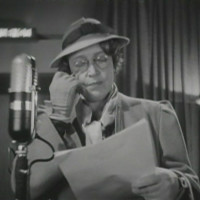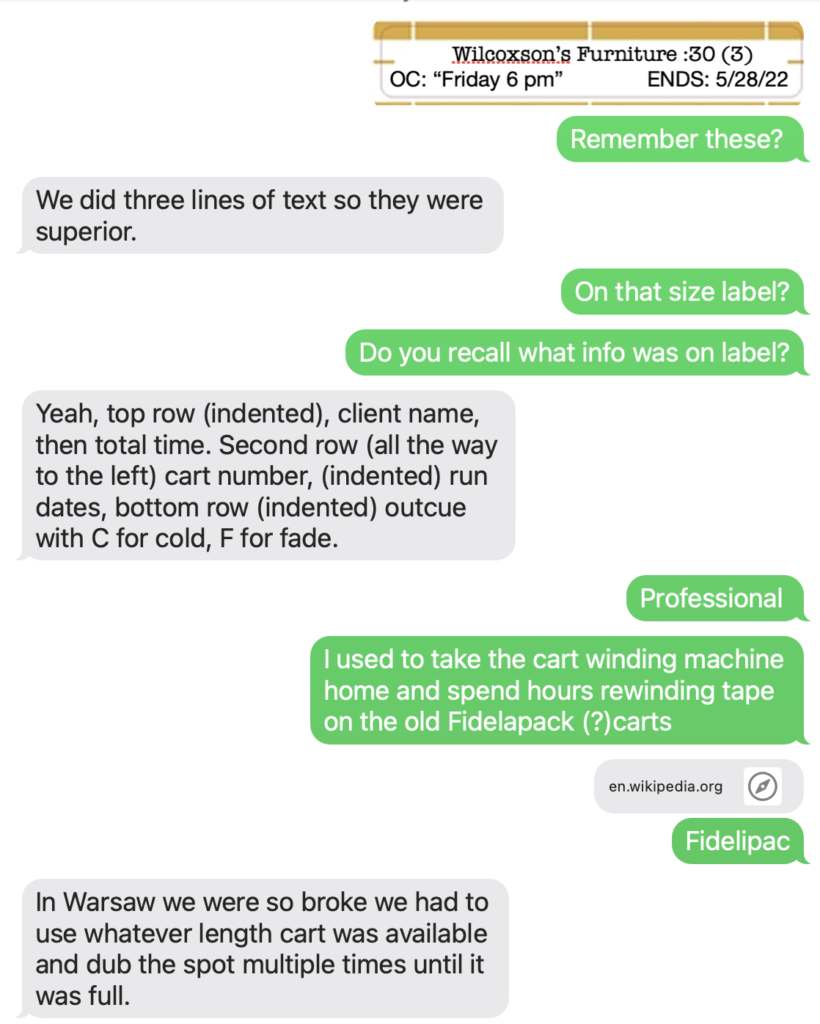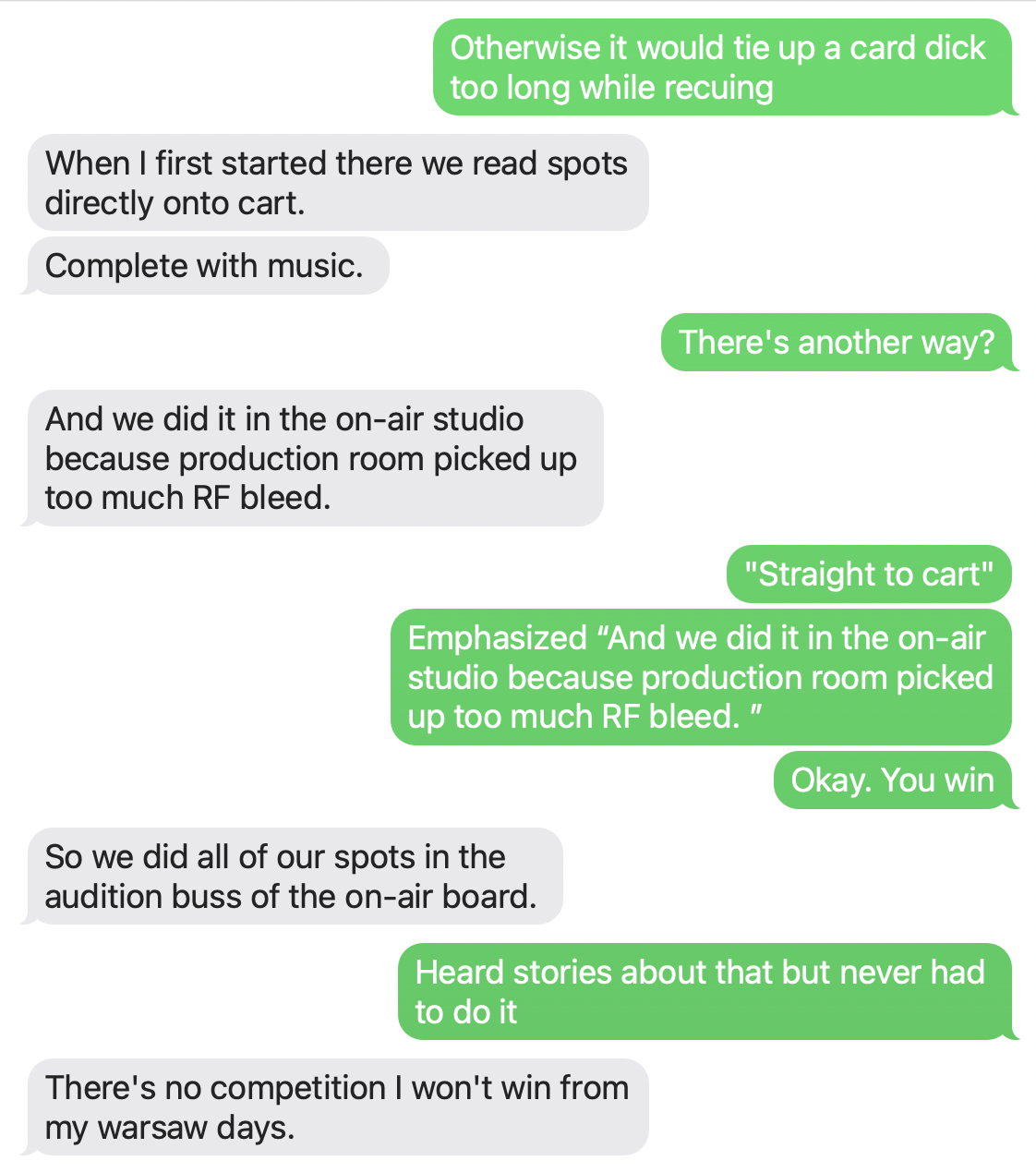Tag Archives: Radio
RadioGPT
I first read about –and started plays with– this technology in February of 2023. I wondered at the time how long it would be before radio station owners took notice. No time at all, it seams.
Futuri Launches RadioGPT, The World’s First AI-Driven Localized Radio Content
Cleveland, Ohio, February 23, 2023 — Futuri is revolutionizing the audio industry with the launch of RadioGPT™ — the world’s first AI-driven localized radio content solution. RadioGPT™ combines the power of GPT-3 technology with Futuri’s AI-driven targeted story discovery and social content system, TopicPulse, as well as AI voice tech to provide an unmatched localized radio experience for any market, any format.
RadioGPT™ uses TopicPulse technology, which scans Facebook, Twitter, Instagram, and 250k+ other sources of news and information, to identify which topics are trending in a local market. Then, using GPT-3 technology, RadioGPT™ creates a script for on-air use, and AI voices turn that script into compelling audio.
Stations can select from a variety of AI voices for single-, duo-, or trio-hosted shows, or train the AI with their existing personalities’ voices. Programming is available for individual dayparts, or Futuri’s RadioGPT™ can power the entire station. RadioGPT™ is available for all formats in a white-labeled fashion.
RadioGPT™ also generates social posts, blogs, and other content for digital platforms related to the content on the air in real-time. A TopicPulse Instant Video add-on creates AI-driven short videos on hot topics for social use. By adding on Futuri’s POST AI-enabled podcasting system, stations can take broadcast audio and immediately publish it on-demand with POST’s auto-publishing feature.
Sell me in thirty seconds
In my dozen years in small town radio I wrote a lot of commercials. Mostly thirty-second “spots” but lots of :60’s (more expensive). It wasn’t uncommon to finish a four-hour on-air shift and sit down at a manual typewriter and bang out ten or fifteen “spots” working from a newspaper “tear sheet” or a salesperson’ scribbled notes. And most of these commercials were scheduled to begin airing the following day so someone had to get in the studio and produce the ad. Point being, there was little demand or time for creativity and the sponsor wasn’t inclined to pay for it in any event.
For a variety of reasons, a :30 second ad had to be :30 seconds. Not 27, not 32. So we followed a rigid format. Given a normal reading speed, a thirty second ad was about 75 words, usually eight lines. Yeah, you could try to get cute and clever but the client wanted to hear about his business. His products or services. And if the client was a supermarket… price-and-item. As many as you could jam in.
So, no, this was rarely creative writing. It was short, simple, declarative sentences. Not a word or phrase to be wasted. I like to think I still write this way.
When email took over from letters and faxes people wrote long-winded tomes that went on for paragraphs. I went through a phase where I would put my entire message in the subject line with “see above” in the body. If it needed more space than that, I would call them or go see them. To this day I think of this approach as “write like you talk.” Which was the final test for radio commercials: reading the copy aloud before going into the studio.
AI news anchors
 During my ~30 years in broadcasting I had numerous occasions to recruit and hire reporters. Because our newsrooms were small (3 or 4 people), reporters also anchored our reports. Which meant they had to be good journalists AND have good on-air delivery. A tough compromise at times.
During my ~30 years in broadcasting I had numerous occasions to recruit and hire reporters. Because our newsrooms were small (3 or 4 people), reporters also anchored our reports. Which meant they had to be good journalists AND have good on-air delivery. A tough compromise at times.
I wonder if technology like 11ElevenLabs’ speech synthesis will (is) changing this. The audio below is a CNN story “read” by one of their voices. (see previous post for more on this technology)
Two old radio guys reminiscing


“Card dick” was my phones best guess at “cart deck.”
Advertising
“With advertising revenue being the significant contributor to Facebook’s success, the risk for Facebook lies in the possibility that users will get bored of its properties – or of its ads,” Littleton said.
Advertising has been a part of my life for as long as I can remember. My dad was in radio for 30+ years and I was in or around it for 40. And advertising paid the bills. In 1971 I was road-tripping across the country with a friend when the radio station we were listening to broke for a commercial. I remember thinking, “I could write a radio commercial.” A year later I started working at a small town station and —over the next dozen years— wrote and produced a shit load of commercials. In the 70s, in our little town, you could advertise in the daily newspaper, on the radio, or you could rent a billboard.
In the late 40’s and 50’s, small town radio was such a new thing that listeners were happy to listen to anything on the radio. Music, news, commercials… how cool is that?! Joe Bankhead tells this story well.
Did any/all of those ads “work?” Were they effective? Not sure I thought about it at the time. If we wanted to keep the station on the air, we had to sell ads. I’ve thought about advertising a lot in the ensuing years. We pointed out to advertisers that our ads were “intrusive.” A good thing. Before they could hear the next song or the rest of the newscast, they had to listen to the commercial(s).
Somewhere along the way music radio stations came up with the idea of “stop sets.” Instead of mixing “spots” in with the songs, they’d stop twice an hour and play as many as eight commercials in a row. Advertisers would pay a premium to be the first, or the last, in the set.
In those days a radio spot was either “price and item” or “image.” Those of us who wrote and produced the spots liked to do image ads because it gave us creative freedom. Small market radio guru Jerrell Shepherd insisted all spots on his stations be price-and-item because it was the only way the advertiser could know his ads were working. Someone would come in and ask about the lawnmower sale he heard on the radio.
Any time an advertiser would question whether or not the ads were working, we’d explain they were “branding” his business in the (subconscious) minds of listeners.
In traditional media (radio, TV, print) it was pretty easy to tell what was a commercial and what was programming/content. When the internet came along someone figured out it might be useful to make a paid commercial message look like the content on the page. Finally we knew for certain: people hated ads. They installed software to block them. They used their DVR’s to skip them.
Today, the best advertising doesn’t really look like advertising. I think Amazon has probably perfected the art. An Amazon product page includes images of the product; reviews; and recommendations of similar products in which you might be interested. And if you don’t like something you bought, no problem. Easy returns.
I’ll admit to being a little amazed anyone keeps buying ads. They must believe they work. And it’s difficult to imagine our “consumer economy” working without advertising. Despite my life-long dependence, I am advertising averse. It’s like your next door neighbors inviting you over for drinks only to spring an Amway pitch on you. Or that Jehovah’s Witness who interrupts your nap with a fistful of Watchtowers.
Smart speaker ownership could outpace radio ownership in younger generations by 2020
“The prediction comes from a survey of 15- to 39-year-old contemporary radio format partisans. The number of survey respondents who own an AM/FM radio outside their car fell from 48% in 2017 to 41% in 2018. Smart speaker ownership is posting an opposite trajectory from 14% in 2017 to 24% in 2018. Based on those rates, AM/FM radio ownership is projected to decline to 34% by 2020, while smart speakers are anticipated to rise to 41% by that year.”
“The survey also asked what audio services the respondents used. Across the ages of the survey participants, all posted the highest rates for on-demand audio, topped by ages 15-19 with 77%. YouTube was the second-most common, again with 15-19 year-olds leading consumption at 70%. Pandora had a mixed set of results, with ages 30-34 posting 38% use and ages 25-29 posting 37%, while ages 15-19 had 28%.”
iHeartMedia has revamped one of its AM radio stations to a podcast channel
“The conglomerate’s AM 1470 in Allentown, Penn., will now feature back-to-back podcast programming. The initial podcast selections for this change include several of the flagship shows from HowStuffWorks, which iHeartMedia acquired in September 2018.”
What about commercials?
“It was followed by a massive traditional block of radio commercials: the iHeartRadio app, Bank of America, “Best Fiends” mobile game app, an air conditioning company, Outback restaurants, Capital One bank, Curious Goods (a local store), the Home Depot, a pet store, My Computer Career training program, Walgreens, NAPA Auto Care Center, Choice hotels, AARP, Progressive insurance, and the iHeartRadio app again, this time emphasizing podcasts and introducing the next podcast.”
I seem to recall this being tried back when podcasting first appeared. A San Francisco station? Not sure why I’d want to let this Allentown station pick the podcasts when I can do that myself. Maybe for people to lazy or stupid to do that? Is there an in-car angle?
On your radio dial
I have not listened to a radio station in years. Some of that is attributable to the iPod and the iPhone and some to the decline of local radio. But as a teenager in the 60s, radio was a huge part of my life. Great memories of WLS in Chicago and, later, WWL in New Orleans.
How familiar that radio dial with its five pre-set buttons. If your station wasn’t good enough to get one of the buttons, well, that car wasn’t listening.
The video clip above is from the pickup I recently purchased. Hadn’t bothered to turn the radio on and wondered if it worked. Don’t imagine I’ll do much listening in the truck but I kind of like having it there. For old time’s sake.
25 Dying Professions
The most satisfying and fulfilling job I ever had was that of small town radio announcer. About a dozen years from the early 70s to the early 80s. We still played vinyl 45s and LPs on turntables. We recorded on magnetic tape. Nobody much cared (within limits) what we said. Looking back, I can see that I was fortunate to catch the tail end of radio’s best years. From Work+Money:
One in 10 of the nation’s 33,202 radio and television announcers are expected to see their jobs disappear by 2026. Consolidation in the industry, as well as increased use of syndicated content, is fueling the decline. There’s also the explosion of streaming music services. More and more listeners prefer that over their local, drive-time disc jockey.
Party DJs however, are seeing an uptick in business with demand for their services projected to grow about six percent by 2026. And they earn about the same – $32,000 – as their on-air counterparts.
I thought radio was a dying profession twenty years ago. The Bureau of Labor Statistics has some interesting data on the profession but, like the article above, they combine radio and TV announcers. I’d like to know how many of each.
